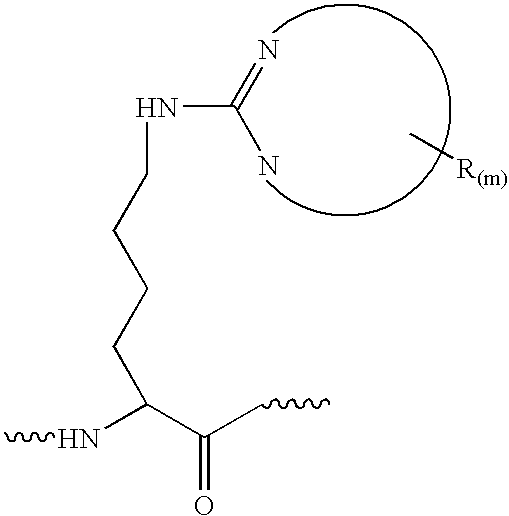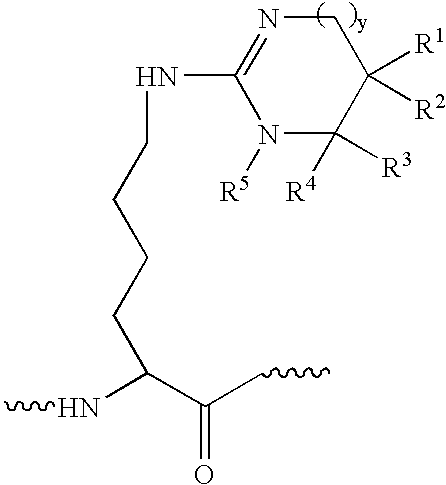Serial derivatization of peptides for de novo sequencing using tandem mass spectrometry
a technology of tandem mass spectrometry and derivatization, which is applied in the direction of peptide/protein ingredients, peptide sources, instruments, etc., can solve the problems of significant hurdles in ms-based sequencing of polypeptides, unpredictable fragmentation patterns, etc., to facilitate the identification of each amino acid in the sequence, improve spectral quality, and improve y-ion intensity distribution
- Summary
- Abstract
- Description
- Claims
- Application Information
AI Technical Summary
Benefits of technology
Problems solved by technology
Method used
Image
Examples
example 1
Derivatization and Imidazole Peptide and Methylation of Carboxyl Groups
[0082] Eight proteins, β-casein (bovine milk), myoglobin (horse heart), cytochrome c (bovine heart), β-crystallin (bovine eye lens), calmodulin (bovine brain), human serum albumin, pyruvate kinase (rabbit muscle) and human transferrin dissolved individually in a buffer contains 8M urea, 100 mM NH4HCO3, pH 8.5 with final concentration about 2 mg / ml. About 200 μg of each protein were first reduced with tris(2-carboxyethyl)-phosphine hydrochloride at 37° C. for 30 minutes and reacted with iodoacetamide at room temperature for 30 minutes. The resulting protein solutions were then diluted four times with final urea concentration was 2 M, and trypsin was added at 40:1 and incubated at 37° C. overnight. Digestion reaction was quenched by added small amount acetic acid. Cytochrome c and transferrin were reduced and alkylated as described above. Without dilution, Lys-C was added to the protein solution at 100:1 and incub...
PUM
| Property | Measurement | Unit |
|---|---|---|
| Mass | aaaaa | aaaaa |
Abstract
Description
Claims
Application Information
 Login to View More
Login to View More - R&D
- Intellectual Property
- Life Sciences
- Materials
- Tech Scout
- Unparalleled Data Quality
- Higher Quality Content
- 60% Fewer Hallucinations
Browse by: Latest US Patents, China's latest patents, Technical Efficacy Thesaurus, Application Domain, Technology Topic, Popular Technical Reports.
© 2025 PatSnap. All rights reserved.Legal|Privacy policy|Modern Slavery Act Transparency Statement|Sitemap|About US| Contact US: help@patsnap.com



